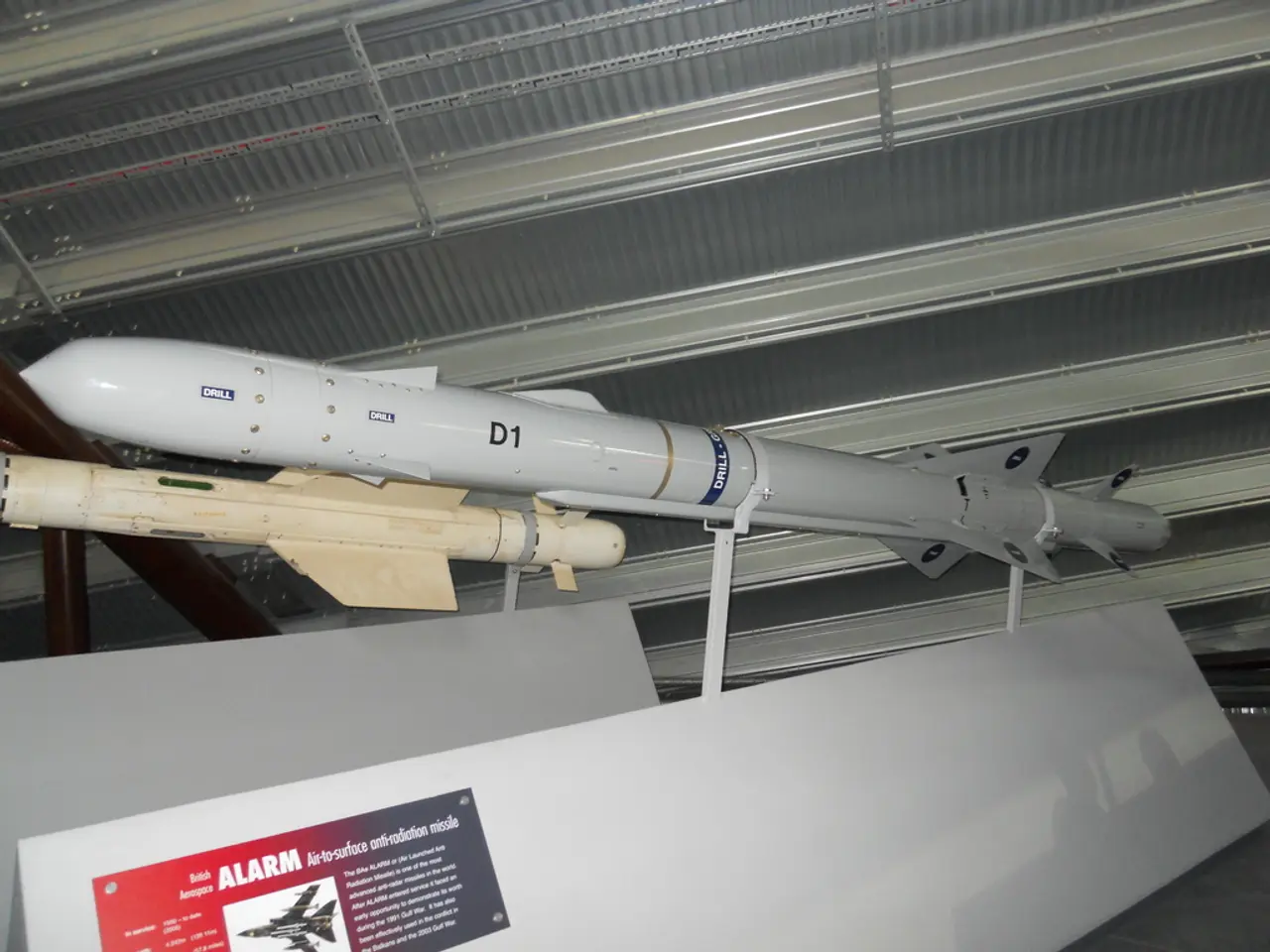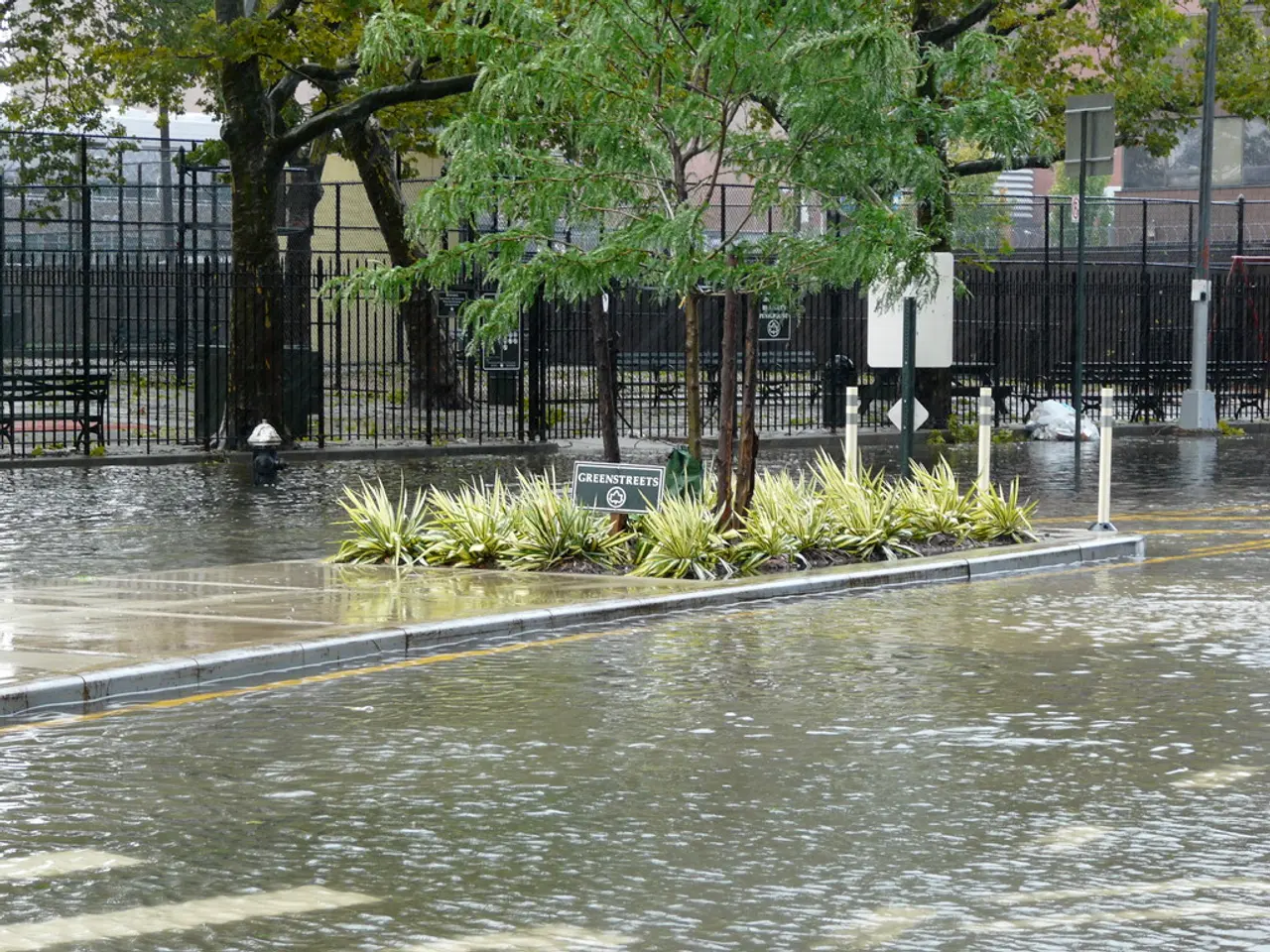B-52 bombers Accompanied by South Korean and Japanese Aircraft during Defense Ministers' Meeting
Allies Reinforce Indo-Pacific Security with B-52 Bomber Flight
The United States, South Korea, and Japan have demonstrated their collective ability to respond rapidly to regional security challenges with a trilateral flight involving U.S. B-52H Stratofortress bombers. This exercise took place on July 11 and was part of a bomber task force deployment from Guam.
The B-52H bombers were escorted by the Japan Air Self-Defense Force's F-2 fighters and the ROK Air Force's KF-16 fighters, signaling enhanced interoperability among the three air forces. This trilateral flight was the third such coordinated exercise in 2025, indicating an ongoing effort to deepen military collaboration and readiness.
The joint drill aligns with broader exercises like the "Resolute Force Pacific" and other precision strike drills, underscoring a sustained, multilateral approach to deterring aggression and ensuring air defense effectiveness in the region.
Air Force Gen. Dan Caine, the Chairman of the Joint Chiefs of Staff, held a trilateral meeting with South Korean and Japanese military leaders on the same day. The top military leaders pledged to continue working together to respond to North Korea's threats and agreed to continue coordination toward the complete denuclearization of North Korea in accordance with relevant United Nations Security Council Resolutions (UNSCRs).
The joint declaration from the meeting emphasizes the importance of close trilateral cooperation in addressing security challenges on the Korean Peninsula, in the Indo-Pacific, and beyond. The defense chiefs also discussed various ways to deepen their cooperation to ensure peace and stability in the region.
The deployment and the trilateral meetings underscore the impact of China's military buildup and aggressive posture in the Pacific on regional dynamics. By conducting these high-profile joint drills, the three countries signal strong deterrence against North Korea and implicit challenges posed by other regional actors, contributing to the balance of power in the Indo-Pacific.
The B-52H Stratofortress bombers were deployed from Minot Air Force Base, N.D., to Anderson Air Force Base, Guam, for the exercise. The joint declaration also condemns North Korea's continued development of unlawful nuclear and ballistic missile programs and urges North Korea to immediately cease all unlawful activities to destabilize the Korean Peninsula, the Indo-Pacific, and beyond. It also addresses the deployment of North Korean troops to Russia and the potential transfer of military technology from Russia to North Korea.
In summary, this trilateral B-52 bomber flight and associated meetings represent a critical demonstration of allied military cohesion and deterrence strategy designed to uphold peace and stability amid ongoing security tensions in the Indo-Pacific. The joint declaration highlights the key role of trilateral security cooperation in promoting peace and prosperity on the Korean Peninsula and in the Indo-Pacific.
- The B-52H Stratofortress bombers, part of the U.S. defense arsenal, were deployed from Minot Air Force Base for the trilateral exercise, signaling the commitment of the military to war-and-conflicts in the Indo-Pacific.
- The air force's bombers, escorted by South Korean and Japanese fighters, demonstrated a united front in response to regional security challenges, a testament to the cooperation in defense and security among the allied forces.
- The success of the interoperability among the air forces was evident in the trilateral flight exercise, which is one of many signs of military collaboration, a hot topic in general-news and politics.
- The space force, while not explicitly involved in the trilateral exercise, may have a role in future defense strategies, given the growing significance of space as a battlefront in war-and-conflicts.
- The joint declaration, resulting from a meeting among top military leaders, urged North Korea to cease its unlawful weapons programs, including missiles, to ensure peace and stability in the region.
- The trilateral military effort, including bombing drills and cooperation, was a response to North Korea's threats, as well as potential challenges from other regional actors, contributing to the balance of power in the Indo-Pacific.
- The United States, South Korea, and Japan's measures aim to keep the air defense effective in the Indo-Pacific, a critical region experiencing turbulent dynamics due to China's military buildup and posture, as well as other political and security challenges.







